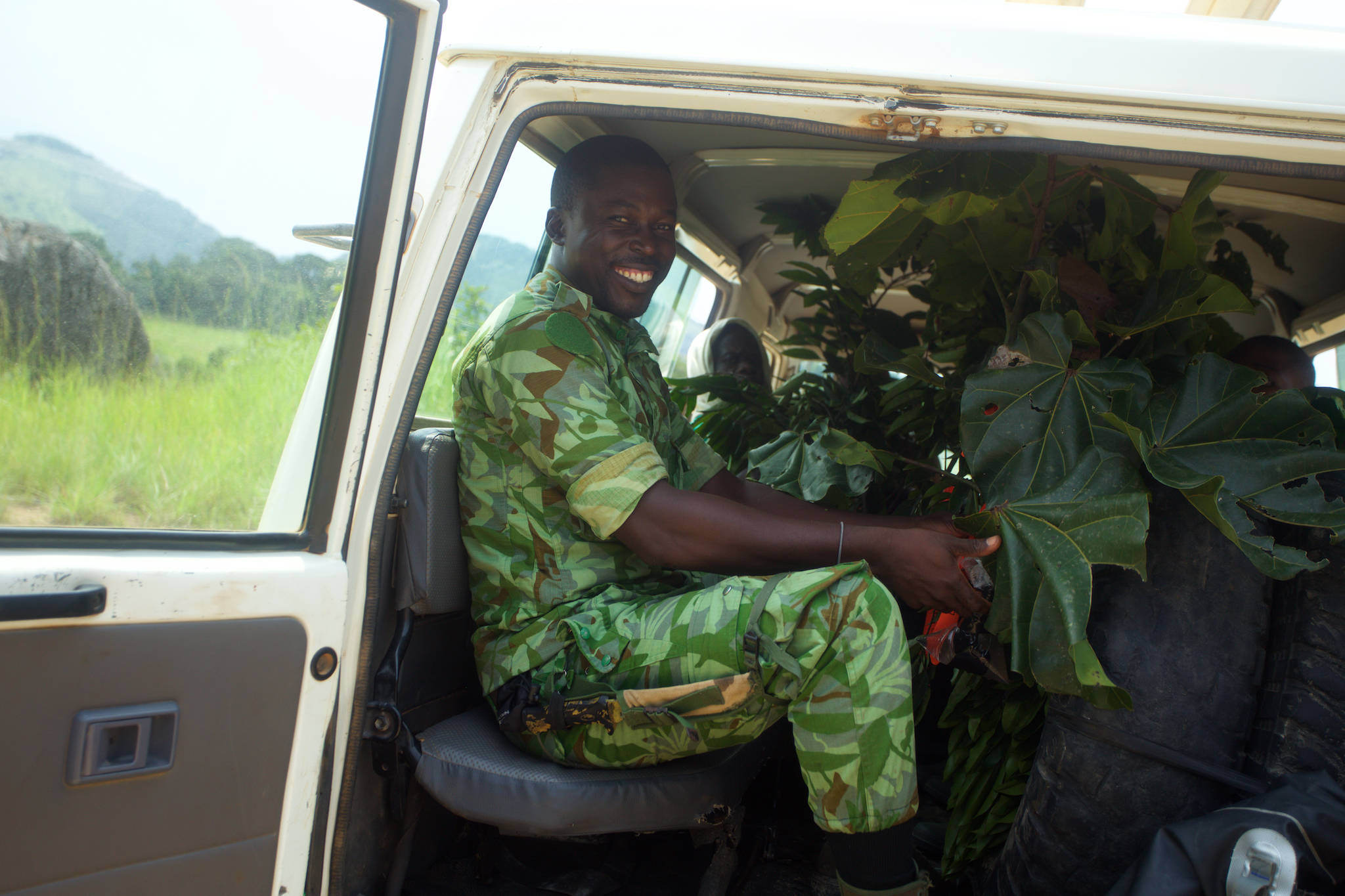What are the logistics like on a field campaign to collect leaves from the canopy of a tropical forest? We collect them to profile these species’ functions – measuring things like photosynthetic capacity that help predict forest function or carbon fluxes. But where do these numbers come from?
Here is a small vignette into how this process works on the recent Oxford campaign in Gabon, in collaboration with the country’s national parks agency (ANPN).
The first step is to decide what to collect. On this campaign, Dr. Sam Moore was in charge, and had already mapped out the location of a Cola lizae (Malvaceae) tree in one of his intensive monitoring plots. This species is closely related to the species that produces a fruit that is an ingredient in Coca Cola – but its fruits of this species are primarily eaten by gorillas.
The plot is about a three-quarter hour drive in a 4×4 from our accommodation – here Sam is looking through data sheets on the journey, mapping out the day’s work.
The next step is to carry in all the heavy climbing gear required to get up these trees.
The walk takes a little less than an hour, and can be muddy where trees have fallen.
Sometimes after heavy rain the paths (that both we and the elephants use) become covered in ephemeral ponds.
Once all the gear makes it to the plot, the key equipment is carried to the base of the tree of interest.
Then Sam discusses the target branch with Agye, our expert climber.
The work is very hard, but Agye is very good – and some minutes later, he is up safely in the upper canopy, with a long metal pruning pole in hand. Here he has climbed another species in order to access the leaves of this Cola lizae.
It takes a few attempts, but with the help of the ground crew (pulling his static line from the ground to position him in midair in the right place) the branch is cut, and falls heavily to the ground.
Here is another example of a different species being cut.
Once the branch is on the ground, Imma and Constant place it in a water-filled bag for safe hiking out back to the vehicle, and eventually our laboratory.
It is not so easy to fit these branches and researchers and guards into a vehicle, but somehow everything makes it in.
Here are a few vignettes of the long and bumpy ride back.
Back in the lab, Mickey measures photosynthetic rates on a branch with a gas analyzer.
And then Esther pulls the branches apart and prepares the leaves for drying and storage.
Sam brings the finished samples to our drying oven, taking care not to disturb the wasps that have made a home above the field station’s door.
The sun goes down – a few measurements have been successfully made, and the whole process is ready to be repeated again the next day.
I assisted with this campaign for only a few weeks of its multi-month duration. It has just now wrapped up under Sam’s leadership. It is a testament to everyone involved that this level of coordination and effort and quality can be kept up over so many long days. But it is still the best way to brings leaves on their long journey from the canopy to a data sheet, and to make numbers from forests.



















Comments
4 responses to “A cola leaf’s journey from canopy to data sheet”
Love these posts. Totally out of my zone of experience. Grueling work! But fascinating. Were there insects on the leaves that you had to deal with? I can just imagine things crawling off in that tight van. I’m really curious about your meals. Was there a cook on staff? Were you eating local foods?
I’m glad that you liked it! We had a few women who lived nearby come to cook for us. Gabon does not have much agriculture any longer (https://en.wikipedia.org/wiki/Agriculture_in_Gabon), so nearly all the raw ingredients were canned/dried and imported from abroad.
NICE!
Great job. This is one of my interests 🙂